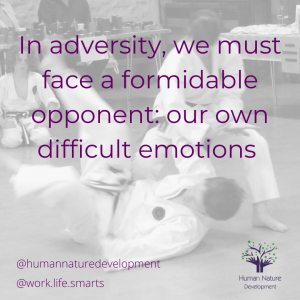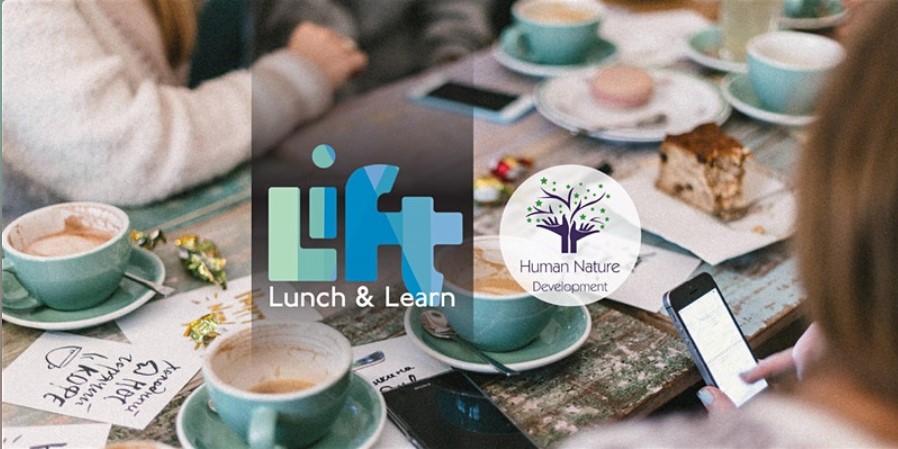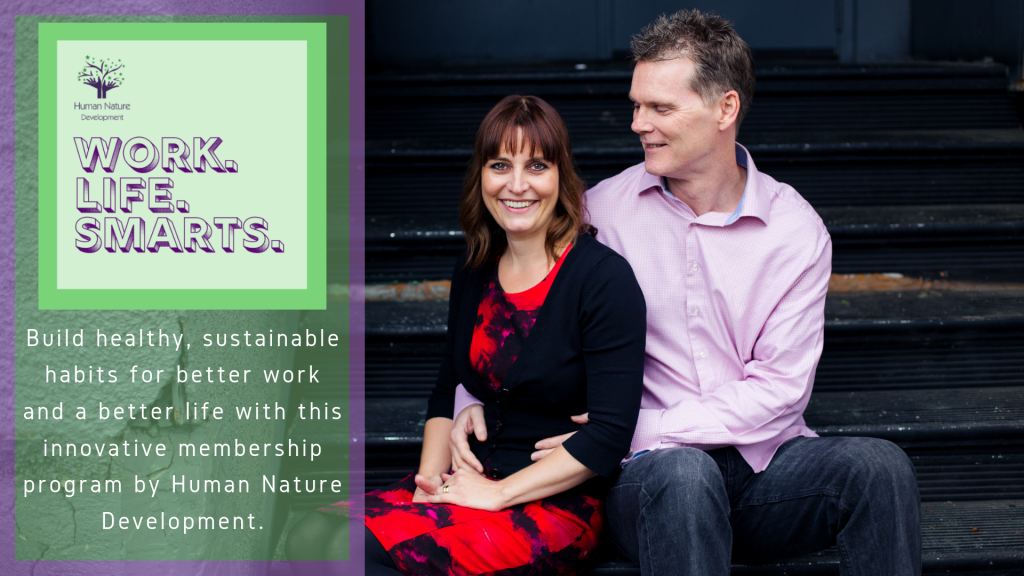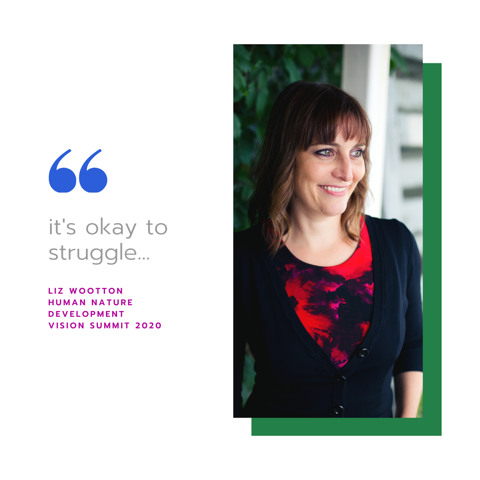Revive Your Small Business During the COVID-19 Recovery

If your business was categorized as nonessential at any point during the COVID-19 pandemic, you probably took a financial hit.
But now that the economy is beginning to recover, you have the opportunity to focus on growing your small business. Here’s how to bounce back as a business owner, thanks to Linda Chase of ablehire.org
Administrative Obligations
Don’t wait any longer to take care of any administrative tasks that you’ve pushed to the backburner during the pandemic.
- Taking recent circumstances into account, you’ll need to modify your business plan to properly prepare for the coming months.
- Concerned about your company’s finances? Meet with an accountant for budgeting and forecasting guidance.
- Protect your assets by filing incorporating your business. This guide walks you through all the steps involved in the process.
Focus on Safety
Are you trying to decide whether it’s time to bring your full staff back to work, in person? These resources offer plenty of valuable safety tips.
- Is allowing your staff to work remotely for the long term the right choice for your business? This guide will help you make a plan for running a
fully remote business. - Maybe your staff is ready to come back! To prepare for this exciting development, take these precautions, and keep the conversation going with your staff on how they’re feeling.
- Make sure that everyone frequenting your business stays safe, for example by requiring customers to wear masks, and supporting your customer facing staff in enforcing appropriate mandates.
- And don’t forget to practice some self-care so that you’re ready to help your customers as they begin returning to your business.
Promote Your Business
You need to increase your sales and revenue as consumer confidence is renewed. You can do it with these tips.
- Launch an email marketing campaign to let your long-time customers know about any new developments for your business.
- Are you reopening your brick-and-mortar shop? This guide will help you create attractive window displays!
- Even as people are shopping in person again, social media marketing will still be essential, so make sure to engage with your followers regularly.
The pandemic may have undermined your confidence as a business owner. But if you’ve made it this far, you know that better days lie ahead. By referencing these resources, you’ll be able to take your business from struggling to thriving during the recovery phase.
About the Author: Linda Chase created Able Hire to help people with disabilities build rewarding, successful careers. She hopes Able Hire will be a resource for people with disabilities seeking jobs and for hiring managers seeking a better understanding of what people with disabilities have to offer.
Leading Through Difficult Emotions
In adversity, we must be willing to face a formidable opponent: our own difficult emotions.
When faced with such an opponent, our first instinct might be to run, or to avoid. Engaging may feel dangerous, uncomfortable. Our discomfort or shame can cause us to lash out at unsuspecting bystanders, or deflect the difficult feelings onto others through blame.
In the moment, it might make us feel better. We perhaps become defensive, convince ourselves it was something or someone else’s fault. We put the armour on, shield ourselves to stay safe from these difficult feelings. Or we push them down, hiding the feelings away and refusing to engage with them at all. It’s a natural thing, for our brains to try and keep us safe.
But by deflecting, shielding, or suppressing, we are only delaying the hurt. We are not truly safe, and we may merely be perpetuating a long line of similar behaviours throughout our teams (whether those are work teams, sports teams, volunteer teams or families). Hurt people hurt people. It’s a vicious cycle.

What if, instead, we choose to be courageous? What if we step onto the mat, and spar with those feelings? If we step into the discomfort, face our shame head-on? Only this way do we learn and grow.
This is definitely not the easy path, it is not a path of comfort, but this is the path of growth and improvement. This path requires vulnerability, it requires humility, strength and courage. It requires owning our part, admitting when we have taken emotionally driven actions and hurt other people. And we must treat ourselves and others with kindness, support and compassion as we walk it.
True leaders can encourage others to take this path, leading by example and with empathy. Helping them to understand that emotions are not ‘wrong’ or ‘bad’, they just ‘are’. But how we choose to act when we feel those emotions is important.
Let’s understand this: success is not being happy all the time. And experiencing sadness, anger, fear or shame does not mean you are failing, or that you are weak. Difficult emotions are part of the human experience just as much as the pleasurable ones. Let’s learn to learn from them.
Life in a Pandemic – Zoom Fatigue
Pandemic Series - Zoom Fatigue
Finding the whole online meeting thing a bit draining? Or are you resisting it altogether? That’s understandable. But online meetings are here to stay… so before you give up on them completely, try these tips and techniques from our very own Liz Wootton. Grab a coffee, sit back and relax to watch this video (or scroll down for the transcript).
Whether you love them or hate them, online meetings have become part of the landscape of work and life in 2020 – and let’s face it, are likely to stay that way for the foreseeable future. Most of us have accepted this new reality, albeit reluctantly for some. But it’s fair to say that “Zoom Fatigue” has also become regular vocabulary for many. Some are resisting online meetings. Some are outright refusing them. Others are struggling through, ending their days exhausted and frustrated, and longing for a return to the normal that was, pre-pandemic.
We have a long wait for a time we can safely return to a world of in-person and board room meetings – and even when that time comes, we may find that the world has moved on. Technology, combined with the necessity of the pandemic, has presented an opportunity that previously didn’t exist. Workers now have remote working options that previously weren’t made available to them – and many are loving it. People who had previously been told that working from home was impossible, even to accommodate disabilities or family responsibilities, are now being given the incredible opportunity to prove not only that they can, but also that they can be even more productive than before.
Whether you view online meetings as a short(ish)-term stop-gap solution during the pandemic, or as a permanent life-changing fixture, learning to live with them has to be part of our agenda.
We have been using online meetings at Human Nature Development for remote working for many years, as well as to keep in touch with friends and family in far-off places. So I want to offer some tips for avoiding and dealing with what has lovingly been called ‘Zoom Fatigue’ so you can begin feeling more positive about connecting with others in the online space.
1) Start with self-reflection.
If you dislike online meetings, ask yourself why. What irks you? And what’s behind that? For instance, the ‘obvious’ reason for hating Zoom might be that you can’t make eye contact, you hate sitting in front of a screen all day, using the tech is difficult etc. Under the obvious though, may be something a bit deeper – for instance, attending an online meeting that used to be in the board room can be a reminder of what you’ve lost. And being reminded of something you’ve lost has emotional consequences. It’s hard to accept something you didn’t want – especially when you liked what you had before – because you need to let go of what you had before in order for the acceptance to happen. Loss is difficult. Loss often means a grieving process of some sort.
It’s ok to feel feelings, even about something as supposedly trivial as an online meeting. Change is hard, even if it’s change you want. So be kind to yourself as you work towards acceptance.
2) If you feel uncomfortable being on video, you’re not alone.
Full disclosure here – I spent 3 years at acting school, honing my craft and preparing myself for a career on stage and screen. At the end of that 3 years, I was still uncomfortable as **** on camera. Weird, huh? What I eventually figured out was that I remained uncomfortable because I avoided the chances to practice – the chances to stretch my comfort zone by stepping out of it. That’s a human thing, because we like to stay comfy as much as possible. But the important thing for the average Zoom meeting participant is this:
a. It’s not like being on TV. Unlike me, in my previous life as an actor, your performance in a Zoom meeting is not being scrutinized and criticized. Zoom, Teams, Skype and the rest are merely tools that allow you to connect visually with other humans. If you’re ok being in a room with other people, there is nothing more to fear about the camera in front of you. Think of it like a window which lets the other people see you and you see them.
b. The other people in the meeting like to see your face. It’s not the same as being in the same room as someone, but it still provides visual cues that make communication more meaningful.
3) Be mindful of your energy budget.
Online meetings may feel more draining than in-person meetings. If that’s the case for you, schedule yourself with that in mind. Avoid back-to-back meetings wherever you can. Spread them out, and do energy-replenishing activities in between. Take fresh air, movement and nutrition breaks in between. Think about it this way – if you were previously moving to different rooms or locations between meetings, the fresh air or movement breaks were a natural part of your day that helped replenish your energy. If you previously had a commute, but now your path to work is a short walk from your bedroom down the hall, you might be missing the opportunity to set your brain going while you drive in, and take a moment for yourself as you enjoy the coffee you picked up on the way. Your end of day routine may also be missing the built-in decompression time you had on the drive home.
The things we miss aren’t always obvious but may be an important factor in our day. Once you identify them, you can create new ways of building them into your day with intention. Think about what your typical day looked like pre-pandemic, and include the trivial bits and pieces – water cooler chats, commuting, changing locations or environments, visits to coffee shops. Then think how you could intentionally replace some of that activity in your new working set-up. A quick check in call with a colleague while you have a coffee, walking around your back yard between meetings, journalling before you start work to replace the quiet alone time you had on your commute.
4) Avoid unnecessary meetings.
This, honestly, is advice for life in general, and applies just as much to in-person meetings as it does to online ones. If you can deal with it in a quick phone call or an email, it doesn’t need to be a whole Zoom performance. Likewise, avoid inviting people who don’t really need to be there. Everyone hates being dragged into something they’re not really needed for. Again, this is advice for effective meetings in general.
Be mindful – and avoid any meeting practices that happen just for the sake of it.
5) Always use good meeting etiquette.
This makes meetings better for everyone. Here are my golden rules:
- Don’t multitask (EVER). It may be tempting when you’re on your computer and your notifications pop up, or the other participants can’t see your phone off to the side, but don’t do it! Not only is it rude, but it also drains your own energy faster if your focus is scattered between several tasks.
- Always listen to the person talking.
- Don’t talk or make noise over others, mute your mic if you need to and avoid interrupting. This can play havoc with the sound in online meetings. Instead, keep a pen and paper handy, and make a note of anything you’d like to say so you can raise your point when the other person has finished speaking.
- Avoid side conversations using private chat. This is multitasking, and it means you’re definitely not listening to the person talking. If there’s something you want to talk to someone about, do it after the meeting. Keep your attention on the meeting at hand, and have a separate conversation afterwards.
6) Keep meetings on time and on track.
Start on time, finish on time, and have an agenda. Appointing someone as a facilitator is especially helpful to make sure you keep on track and that everyone has an opportunity to be heard – particularly in meetings with a larger number of participants. You can appoint a second person to take notes and keep an eye on the clock. Gino Wickman’s Level 10 Meeting, which he describes in his book, Traction, is a helpful template to follow here.
7) Celebrate working from home.
Forget the idea that you’re trying to reproduce what you had in the office in your home setting. It’s different, and that’s ok. You may be juggling kids and pets, and that’s ok too. A few years ago, this amazing interview happened on BBC News… Notice the poor guy’s awkwardness, and his wife’s horror when she realises what’s happened…
Those of us who worked from home at the time knew their pain; the awfulness of having your image as a highly professional expert in your field tarnished by the joyful swagger of your tiny child as she exposes your real (and imperfect) life as a parent and spouse.
But now, we no longer have to pretend that our lives outside of work don’t exist. Suddenly, working from home, with all its imperfection, has become the new normal. We shouldn’t have to apologize or feel shame for having a life alongside work, and we shouldn’t have to hide it in order to be seen as professional. We’re all in this together– kids, pets, no make-up faces, messy backgrounds – this is real life – let’s celebrate it!
8) Above all, remember that the person or people you are talking to are REAL HUMANS, and that Zoom, Facetime, Teams, et al are merely tools that allow you to connect with them, when in-person connection is not possible. Humans need other humans. We are social animals – and that makes this pandemic truly challenging for all of us. But we have this gift of technology that allows us to create connection in a way that even 20 years ago wouldn’t have been possible.
Instead of seeing this tech as an obstacle to the in-person, face-to-face connection you’re missing, reframe it as a TOOL for making the otherwise-impossible, POSSIBLE.

If you’d like help making your meetings more effective, or creating a better balance or boundaries for yourself as you navigate your new normal, please reach out today.
It’s what I do, and I’m here to help.
~ Liz
liz@humannaturedevelopment.com
Grit
Let's talk GRIT

Liz Wootton talks grit: an important factor in success.
I live with chronic pain, and it has affected my life in many ways, not least because I had to give up my beloved GojuRyu Karate practice. I loved the fitness, strength, confidence and mental wellness it gave me. For a long time I hoped I could go back to it, but the more time went on, the more it became apparent that a return might not be wise. I struggled to find a replacement exercise that would allow me to get my heart rate up, move my body within its limits, and not flare my pain. I also longed for the mind-body-spirit connection.
I was advised to find something ‘fun’. But not anything too stretchy (so not yoga) or with too much impact (so not running), or bending forwards (so not cycling), or extending my back (so swimming not great either). 😳 It felt like a pointless quest.
But there was part of me that hung onto the idea that I would find something I could do which would allow me to work within the limits of my body and be fun enough to make me want to do it. I kept the thought with me – and when I suddenly remembered 5Rhythms, a type of dance I had done more than 20 years ago, that grit served me well. It meant I was ready to see the opportunity that 5Rhythms was offering. It meant I stayed curious and open-minded enough to try it.
Grit also served me well in the weeks (or months?) that followed the first thought. I didn’t jump on the action immediately after I remembered 5Rhythms. It stayed an idea for a long time before I actually decided to DO it. I had to work through the various resistances and habitual thoughts and behaviours that were getting in the way of me making a start. I was tired. I was busy. I was in too much pain. I wasn’t in that much pain and didn’t want to risk a pain flare. I put time aside and then got sidetracked by some other task… Grit ultimately was responsible for me not giving up on the idea of trying 5Rhythms, despite all the resistances I was putting in my own way.
Eventually, I gave it a shot. I asked the resistant voice to be quiet for 30 minutes while I put the guided YouTube video on. And I danced the 5Rhythms in my living room.
Grit – the years of not giving up on finding a fun form of exercise I could do, the months of not giving up even when my own resistances were creating barriers – finally paid off. At the end of that first half hour, I felt elated. Next day, after no pain flare (I was even more elated at that), I did it again. I took the photo above after the fourth day’s 5Rhythms. And was inspired to write this.
Here is how I describe Grit:
Grit is perseverance and determination, but more than that – Grit is perseverance in the face of adversity. Grit is the ability to face a challenging obstacle head-on (like exercising with persistent pain), and go through failure after failure to get around it, but never giving up on finding a creative solution.
Grit is patience. Accepting that slow progress is still progress. Accepting that failure is a learning opportunity, not the end of everything. Grit is accepting marginal gains and knowing that small is great.
Grit is accepting that things outside of your control might mean your plans or goals have to be adjusted. Living through the upheaval that is a global pandemic has affected everyone’s plans. If you set goals early in 2020, you might have wondered if it was worth the effort. Grit is keeping the idea with you even if it has to go on hold for a while.
Grit is NOT hustle. It’s not GRRRR.
Grit is a marathon, not a sprint. Grit can be slow and steady, quiet and invisible.
Grit is accepting the cold hard facts of your situation, but not losing faith that you will prevail in the end.
Find out more about working with Liz Wootton here.
Find out more about the 5Rhythms here.
Self-care during COVID-19
Self-Care in a Time of Crisis
This post was inspired by my sister, who today was telling me of a 21 day program she was signed up for through her work (she’s a teacher) designed to help people feel good as they navigate this COVID-19 crisis. Each day, she receives a suggested exercise by text, which is supposed to go some way to enriching one’s life – it’s bitesize and simple. But she was puzzled by some of the exercises, which didn’t quite seem appropriate for a time of crisis when so many are worried about money – today’s suggestion was to list all your debts and monthly financial obligations, but with no instruction other than to list them. She was concerned this might not exactly have a calming effect on those who have lost income.
As a coach, my first instinct was that this 21 day program wasn’t designed for times like these. Yes, under NORMAL circumstances, if you tend to put your head in the sand about money, and need to regain a sense of control, listing all your monthly outgoings makes sense. Put all the problems out on the table, then you can start to figure out a plan to deal with them. But these are not NORMAL circumstances. If the idea of ‘enriching your life’ right now, while you’re trying your best to work from home/keep your business afloat/homeschool your kids/find the groceries you need/try not to get the virus, seems a bit out of reach, it’s hardly surprising.
At times like these, it’s important to remember that you are human. And as such, you have a set of basic requirements, which psychologist Maslow identified in his well-known Hierarchy of Needs. The hierarchy is usually shown as a pyramid – the more basic needs sit at the bottom of the pyramid. Maslow theorized that the higher needs in the hierarchy will emerge when the lower needs have been satisfied.

Self-actualization, the part that we are often working towards when we think of enriching our lives, achieving our goals, reaching our potential, and going after our dreams, is extremely difficult if we are not able to take care of the lower parts of the pyramid.
Life, for many of us during this crisis, may feel like an encampment in the bottom half of this pyramid right now – as we worry about whether the store will have the groceries we need, lose sleep with the uncertainty, and stress about losing income. And that’s on top of the fundamental worry about health and hygiene.
So what do we do? If normal coaching exercises don’t apply, what sort of exercises are helpful to do during this time?
My advice is to keep it EXTRA SIMPLE. There is much outside of your control, but there is still much within it.
Here are a few feel-good things to try right away.
- Address Your Sleep hygiene
Good sleep hygiene is a good practice at any time to help you get the best from your night’s rest, but at times of extra stress or worry, it becomes especially important. Here are a few sleep hygiene ideas you can try out.
- Keep your bedroom at a good temperature for sleeping. This usually means a little cooler than a room you live in.
- Go to bed at a regular time each night. Avoid the instant gratification of ‘just one more episode’ or getting sucked into endless scrolling on social media instead of going to bed.
- Have a wind-down routine if you can. It doesn’t have to be a long one, but even putting your devices away half an hour before bed can help you wind down.
- Avoid social media and news just before bed. Late at night is not the best time to fill your head with worrying news and opinion on the crisis. The news will still be there in the morning.
- Try a guided meditation for sleep. There are hundreds available on the free Insight Timer app. My personal favourites are Jennifer Piercy’s Yoga Nidra sessions.
Gratitude has been shown to have neurological benefits. It’s not false positivity or ‘finding a silver lining’, rather it’s intentionally acknowledging your appreciation for some aspect of your life. You can find more information at Positive Psychology here.
What’s missing from your Goal Setting Process?
Make the Leap from Goal Setter to Goal GETTER

Want to up your game from just setting goals, and actually start achieving them? If you want to make the leap from being a goal setter to being a GOAL GETTER…?
The live event happened April 1st, but if you missed it, and wish you’d been there, don’t worry – you can get instant access to the recording!
“Set audacious goals! Don’t be afraid to dream! Shoot for the stars! Aim high!”
If the memes we see all over the interwebs are to be believed, having the dream would be enough. You’d set your goal, and everything else would fall into place. If that were true, then everyone would be earning big money while working part time from a tropical island, right?
And forget work-life balance. Juggling business alongside family, health, relationships, and this thing we’re supposed to do called self-care, can feel more like a work-life struggle. Going after professional goals can leave you sacrificing personal ones as you work longer and harder, and have nothing left for the rest.
I’m going to share the BIG THING that makes the difference between setting goals and actually achieving them; the big thing (that all humans have the capacity to do, you included!) that helps you stay in touch with your life as well as your work.
Get instant access to the recording here…

The Vision Summit 2020
Vision Summit
Are you ready to make 2020 your year of vision? If so, we have an exciting (and free!) event to share with you. If you want to clarify and take action on your vision this year, I highly recommend you check out this upcoming FREE online summit.
The Vision Summit is a 3-day online experience (Feb 20-22, 2020) designed to give you the insights and inspiration you need in order to clarify what you want, take steps toward it, and learn to trust and appreciate yourself and your journey. I’m honoured to have been asked to take part – you can catch my interview on February 21st 2020!
Hosted by Heather Evans and Melissa Steginus, two coaches passionate about self-empowerment and manifestation, this event is designed to lead you to fully engage in your life. You’ll get powerful techniques and practices that you can apply right away to feel energized, empowered, and equipped to manifest your highest vision for your life and self.
The details: The summit runs from February 20-22, 2020. During these 3 days, myself and 16 other speakers and practitioners will be sharing our journeys, lessons, and expertise on topics like: self-love, personal empowerment, manifestation, and so much more. You’ll get access to our interviews as well as practical tools and techniques, meditations, mindful movements, and exclusive bonus offers! If you’re interested, register here. Make sure to catch my interview on self-empowerment on Feb. 21st!
You’ll hear deeply personal and moving stories and gain resources that address real-life issues, showcase vulnerability, and provide useful tools and approaches to nurture personal growth. From all the speakers and teachings in this free summit, you’ll get powerful techniques and practices that you can apply right away to:
- Stop demonizing your past self and begin to thank, love, and appreciate that person
- Appreciate where you are on your journey and take steps forward from an empowered place of gratitude
- Shift your perspective to believe you’re not broken or in need of fixing
- Tune into yourself in body, mind, heart, and spirit while learning to love yourself unapologetically
Are you in? Mark your calendar and register here for the FREE ONLINE VISION SUMMIT!
P.S. If you want to enjoy this online event with your friends, family, or colleagues who might also be interested and benefit, be sure to send them the link to this page to sign up too.
The Courage to Change How You Work

All of us have habits. Biting your nails, checking your phone every time it buzzes, leaving the toilet seat up… humans are creatures of habit, for sure. When it comes to running a business, it’s really no different. We develop habits unconsciously, often not even realizing we are doing it.
We are also, most of us, aware that developing good habits, or getting rid of the habits that don’t serve us, would be a great thing to do. The trouble is, it’s not that easy.
There are all sorts of reasons why it’s hard to change your habits, but there’s one in particular that I want to dig into. We often think of habit change being about willpower, pure and simple. If you want something enough, you’ll do what it takes. But there’s another, more insidious thing I want to talk about:
FEAR.
Making change is especially difficult if what you are doing now is in some way getting results. Take these examples:
You might want to work fewer hours – those 70 hours you’re racking up each week are sapping your energy and leaving you with no time to spend with your family, and you’d love for that to change, but the problem is, those 70 hours are earning the money. You’re AFRAID that if you put in less time, you’ll get less income.
You might want to delegate more tasks so you don’t have to do it all yourself. But when you do them yourself, you know it’ll be done right, and you’re AFRAID that if you ask someone else to do it, you’ll end up having to redo it because they did it wrong.
The people around us often feed those fears too. How often have you heard fellow business owners saying, “If you want to make a success of your business, you need to work harder than anyone else, you’ve got to expect to work 60-80 hours a week,” or, “If you want a job doing well, you have to do it yourself?“
But what if they’re wrong? What if these are just myths? What if you could achieve the same income, or the same results, by doing things differently? What if you could win 10 or 20 hours a week back for yourself? What if you could delegate a task and have it done EVEN BETTER than you could?
As Jim Collins said, “Good is the enemy of great.” It’s much easier to stop doing something that isn’t working at all than it is to convince yourself to stop doing something that’s getting some results, even if the results aren’t the best, and even if you think there might be a better way. Sticking with what you know feels safer.
What if you had the courage to try? What if, by being brave enough to change HOW you work, you could achieve even greater results? Where would you start? What support would you need? What would you most want to change to make work more enjoyable again?
Challenging your belief system requires courage. It means taking what you think you know, and challenging all of it. If you believe that success is directly related to working longer and harder, it will take courage to convince yourself to build a habit of working less. If you believe that no one else can do the job like you can, it will take courage to allow someone else to have a go.
But it doesn’t stop there. It will also take courage to keep going. Because you will not always be successful first time (or second, or third time). You have to give yourself time and space to learn – to fail and to learn from those failures.
But when you can challenge your beliefs, be courageous in the face of failure, and use your stubborn determination to learn a new way of working, THEN you give yourself the freedom you so long for.
The reason coaching is so powerful is that it helps you identify and challenge your limiting beliefs, gives you strategies to help you make changes to your habits and behaviours, and gives you encouragement while you learn that your courage to try them is well placed.
Take action today. This fall we are launching a powerful membership program, Work.Life.Smarts. This program will help you develop healthy, sustainable habits for a better business and a better life. No more working longer and harder, no more busy-ness for the sake of busy-ness. Just smarter, more effective ways to use your time and energy.
Stay tuned for official launch info (click the blue button at the top of the page to be first in line to hear the news as it happens).


